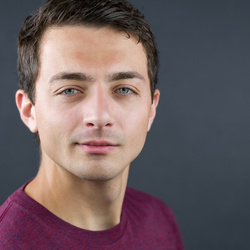Capturing a great landscape photograph involves more than just pressing the shutter. To truly elevate your work, you need to understand the entire process—from planning your shoot to perfecting the final image.
Coming to you from William Patino, this informative video walks you through the entire landscape photography workflow, from the initial setup in the field to the final edits on your computer. Patino emphasizes the importance of having a location and plan in mind, especially for sunrise and sunset photography. While he often works spontaneously, he notes that beginners should focus on preparation. By scouting locations and understanding the light conditions, you're better equipped to make the most of those fleeting moments when the light is just right.
Patino discusses how he approaches composition, starting with a focus on observation rather than immediately thinking about photography. He advises taking time to appreciate the environment, noticing what naturally catches your eye. Once you’ve identified the main subject—like the snow-capped mountains in his example—you can then consider how to compose the shot to do it justice. This involves deciding on the lens and framing that best highlights the scene. He also mentions the importance of layers in creating a three-dimensional look, using elements like stones in the foreground and mountains in the background to add depth.
The video also covers the technical aspects of the workflow, including camera settings and post-processing. Patino shares his method for ensuring optimal image quality by keeping the ISO low and adjusting the f-stop to maintain sharpness throughout the frame. He uses a histogram to guide his exposure decisions, ensuring the highlights aren’t blown out. After capturing the image, he encourages you to explore different compositions rather than sticking to one shot. This approach allows you to maximize the potential of the location and the changing light.
Finally, Patino walks through his post-processing routine, offering practical tips on file management and editing. For file viewing and basic edits, he uses Adobe Bridge and Camera Raw, though he notes that similar results can be achieved with Lightroom. One key piece of advice is to let your images sit for a few days before doing serious edits. This helps you view them more objectively, reducing the emotional influence of the shooting experience on your editing decisions. Check out the video above for the full rundown from Patino.
And if you really want to dive into landscape photography, check out our latest tutorial, "Photographing the World: Japan With Elia Locardi!"







I like when he said it's hard for the raw files to live up to the experience of actually being there in the moment. I can't tell you how many times this has happened to me. It's funny, it happens all the time with landscape photography, but then with something like Wedding photography, I often feel like if you capture the perfect moment with great lighting, it usually looks and feels better than the actual moment. It's interesting how different genres can do that.